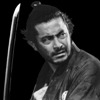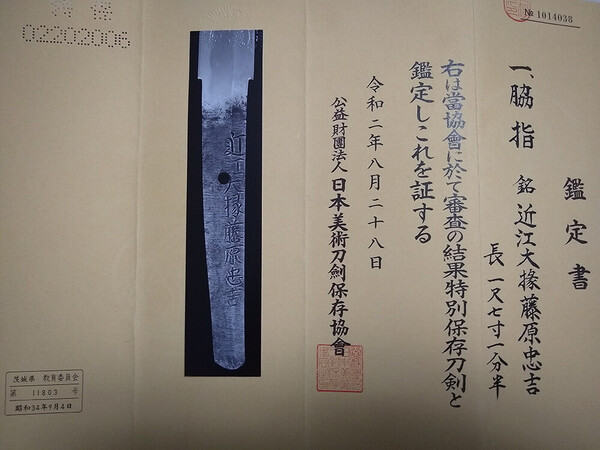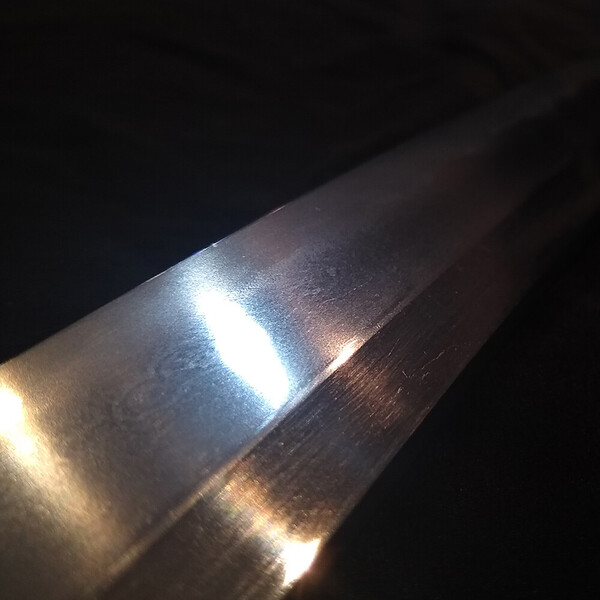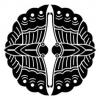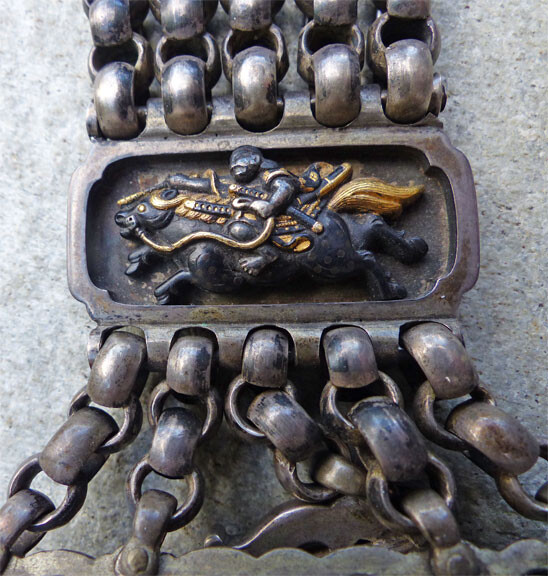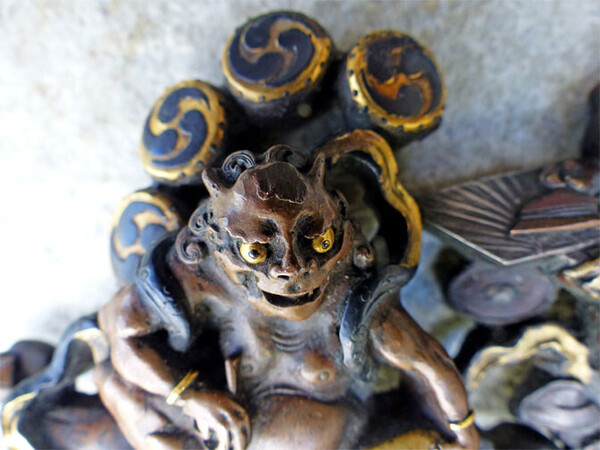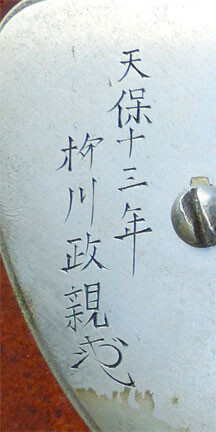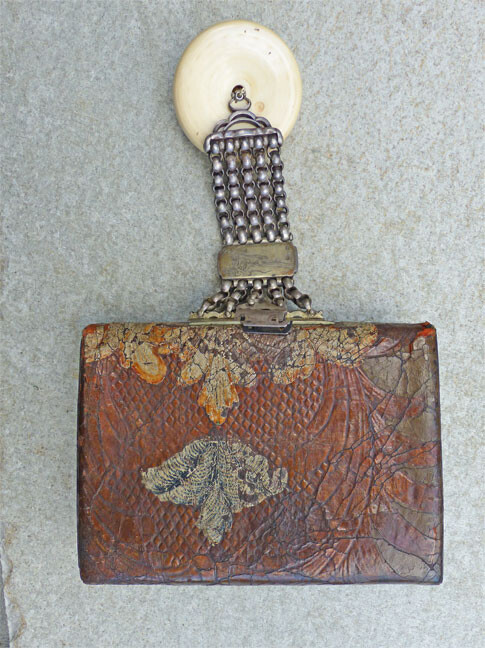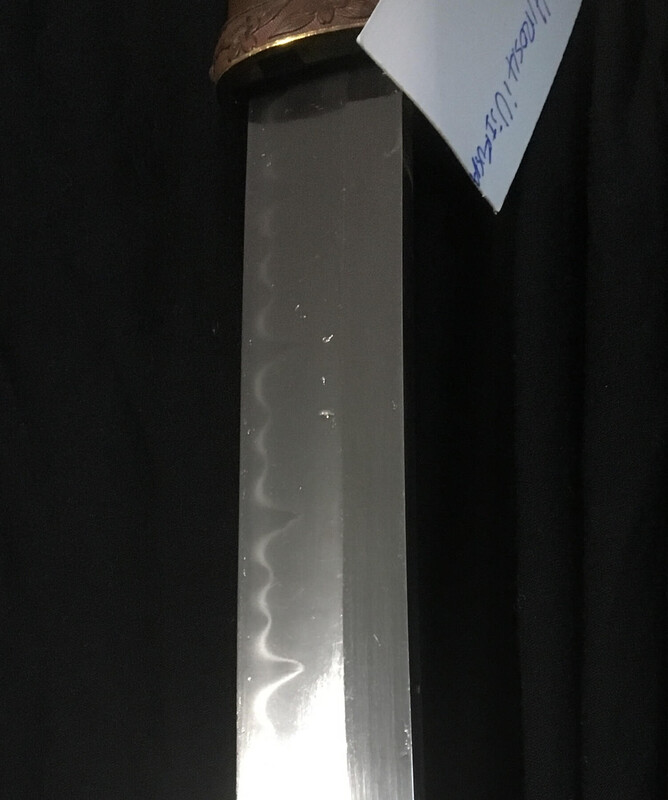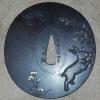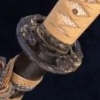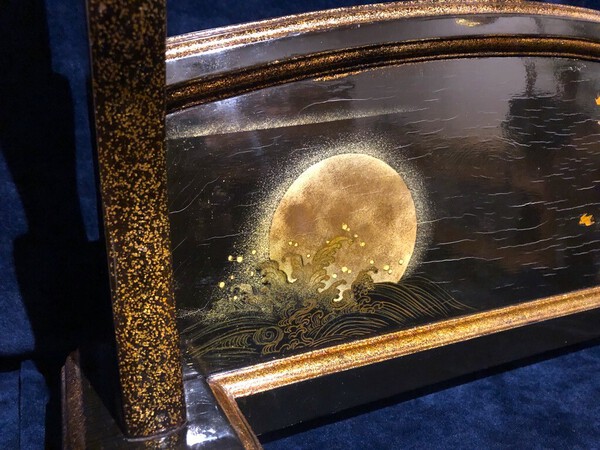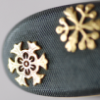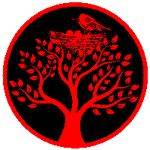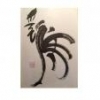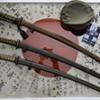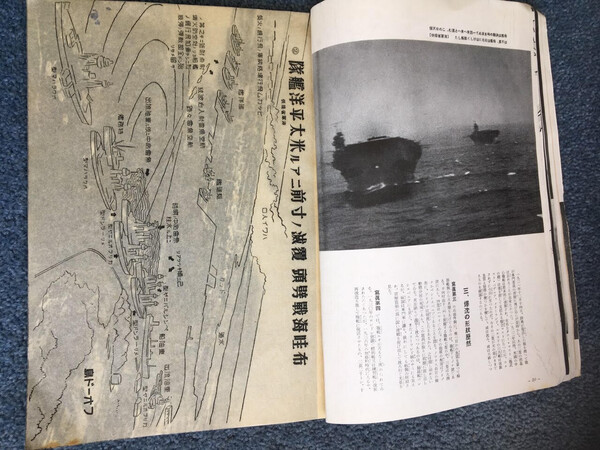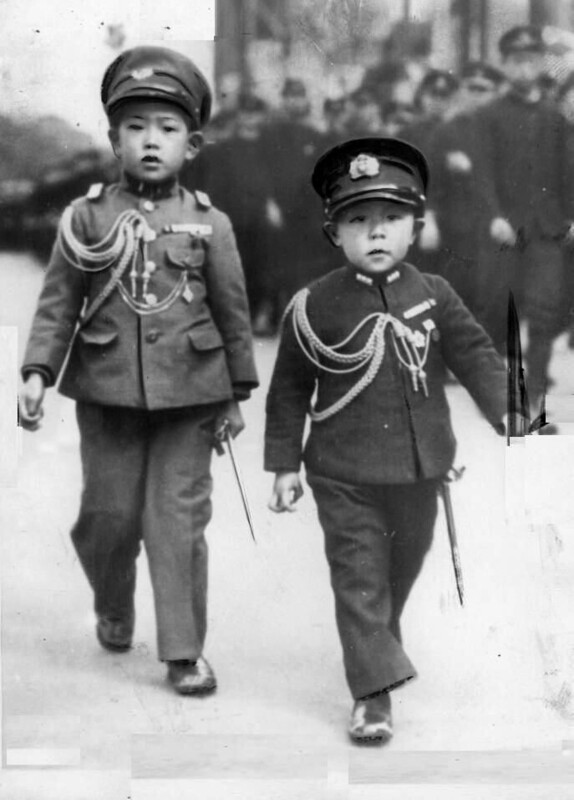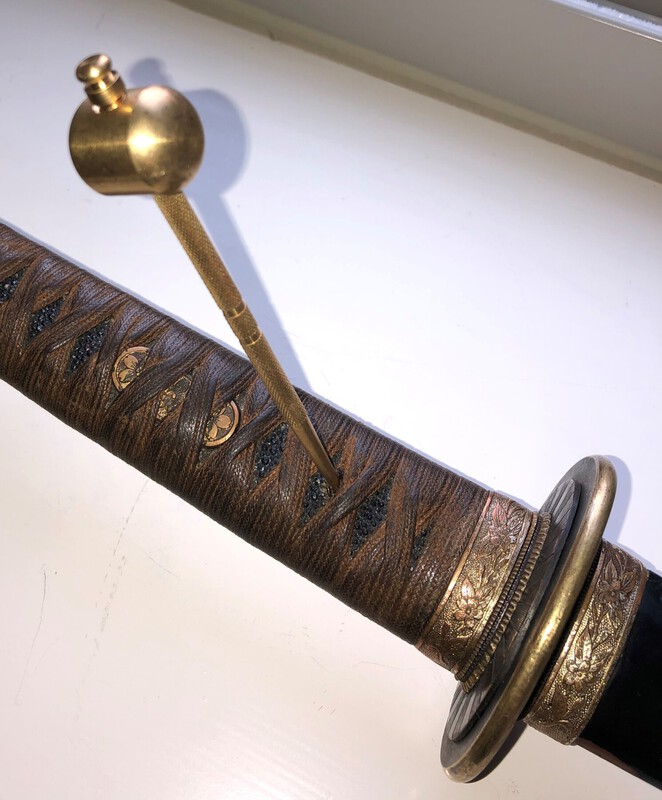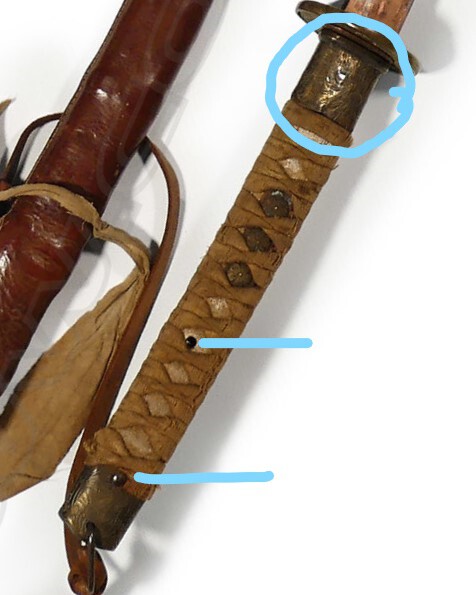Leaderboard
Popular Content
Showing content with the highest reputation on 12/08/2020 in all areas
-
I find sometimes, the smaller things that draw me to Nihonto, are quite joyous. This is a thoughtful gift from my brother, with many thanks. Looking at Tamahgane, not only did it draw me closer to Nihonto, the forging process and knowledge/skill needed, but to family as well. For this, I am thankful! I wish, I could capture the middle stone's deep sea blue, or midnight sky color, and imagine the possibilities... beautiful. Just thought I would share. Happy and safe Holiday season to all.8 points
-
This is an extremely desirable sword for collectors from several stanpoints. Most mainline Hizen Tadayoshi school blades have the representative suguha hamon. Those with a gonome or gonome-choji hamon are very rare and are valued. One of the most serious Hizen collectors described choji-ba Tadayoshi as his 'holy grail'. This is also a desirable blade for the militaria collector who is looking for a blade mounted for use in the war which has a traditionally made antique blade by an important smith from the Edo period. This blade is a 51.8cm Tokubetsu Hozon example by the 4th generation mainline Hizen Smith Omi Daijo Fujiwara Tadayoshi. He was not only famous as the mainline, he was also infamous for one of the legendary stories about Edo period smiths. He was said to have killed the Hizen smith Kikuhira (an excellent Waki-Hizen tosho) in a fit of rage due to the later having an affair with his wife. This sword is in an adapted WWII koshirae with a leather covered saya and an Edo period tsuka rewrapped with gunto menuki. The tsuba is a nice late Edo period example. The jihada shows the very tight konuka-hada that the Hizen smiths were famous for. The hamon is as mentioned gonome / choji-ba. The nakago is perfectly ubu with a clear mei. The blade is still preserved in its koshirae and has not yet been sent for a new shirasaya. It is a great and important example in many respects and would certainly be a highlight in either a Hizen-to or Military sword collection.5 points
-
3 points
-
The tsuba artist is Hashimoto Isshi (橋本一至), also known as Yūshūsha (夕秀舎), which is engraved on this tsuba. He died in 1896. A very accomplished tsuba artist. I don't know if he is trying to recreate a famous Chinese painting, or just trying to create the effect of a Chinese painting. Engraved are 秋江 (shūkō) and 帆彩? (hosai?), which I think allude to a Chinese painting, or a common theme in Chinese painting. Reverse side is...雪山利?兆 maybe representing another Chinese painting, artist, or theme. Next to that is 萬山 and some kind of seal. Sorry, a lot of question marks. Anyway, the artist is a good one, assuming the signature is genuine. There are a lot of fakes out there.3 points
-
https://www.ebay.com/itm/IN-HAND-TAMAHAGANE-TATARA-NBTHK-1st-Grade-60g-with-Tung-Box-FedEx-DHL/313334756394?hash=item48f434f42a:g:BJkAAOSwnNtfz3X8 Dave M.2 points
-
Going by the photo's (legal disclaimer) I would say that this is a post war assembly like the extensively discussed swords formerly known as "mystery swords"! A genuine wartime blade and possibly the saya, completed with a mix of parts from the post war era.2 points
-
安来 No. 2 Yasugi hagane in Shimane and the Wakou Museum may be connected? And see the Shimane Okuizumo Tatara and sword museum.2 points
-
Hello John, I see the following: Army number 27799, Corps Paymaster (睦第二七七九九部隊主計) [number and rank] Army Accounting Department Watcher (陸軍経理部見士) [corps] Toda Yukio (登田幸夫) [name of the soldier]2 points
-
Thank you both ! Very much , might take me a few days but I will be back on with some kind of name for you all to tell me if I am right2 points
-
First one on the right side is 自. This is the first part of his art name. His signature is on the left side. The art name is slightly tricky, but the signature (left side) should be super easy with a kanji dictionary. The first one on the left side is very common. The second one is not as common, but its not obscure either. And its cut so clearly you should be able to pick it out with a bit of diligence. After that is the artists kaō, which requires no translation.2 points
-
Here is a Japanese Tobacco Pouch made of Kinkararawa leather with the mixed metal kanemono of Fujin and Raijin (Wind God and Thunder God, respectively) who are one of the oldest pairs of Shinto religion gods. Fujin is said to have been present at the creation of the world. When he first let the winds out of his sack, it cleared the morning mists which filled the Gate between heaven and earth so the sun shone. RAIJIN, on the other hand, is believed to control thunder. He creates thunder by beating on small drums attached in a large ring. The metalwork on this pouch was made in Tenpo 13, or 1842, by Masachika of the Yanagawa school.2 points
-
Bruce, their lack of interest also surprised me. As you know, I was at Pearl Harbor last year, and even offered to donate it personally. Sent email and letter. OK, it is obviously a Japanese war time piece of propaganda, but it may contain something interesting, and besides the great photos, there are facts and figures in the many pages of printed material. See attached for example.2 points
-
As the anniversary of the attack on Pearl Harbor approaches, thought I would share some pages from a WW2 Japanese publication, detailing their attack. The book contains the strategy, officers, transparent overlays of recon photos, maps etc. I have offered this to the Pearl Harbor Museum, but no reply. Hope you Japanese military buffs enjoy. More photo's can be posted if there is interest.1 point
-
Hi, I started this thread here (see below), believing it was maybe not Morimitsu but koto bizen. Now finally, I have got the blade back from the Togishi. When I figure out how to make smaller pictures with high quality I will add more photos to the same post. Otherwise photos are coming in different posts. Togishi´s thoughts are that this may be a kyoto sword in bizen style. Hamachi and Munemachi has been later added as well as Bohi and Sohi. It is a soft forged sword with smooth jigane (koitame). I find the hada to be Osaka Tetsu. We are both thinking in the lines of Yamashiro. Possible Muromachi or more likely Edo/Shinto period. What do you think. Tried to take photos this morning but let me know what you want to see more of and I will try to comply with better pictures. --Björn1 point
-
I have observed quite a large number of non-traditionally made, oil tempered Showa-To, having very a regular SANBON-SUJI Hamon. Being war time knockouts, I wonder why this regular style of Hamon keeps occurring. I would assume it takes longer to prepare to make it. Is there some significance in its ownership/performance/aesthetics/salability? I would be interested if anyone out there has information as to how and why it keeps popping up on otherwise basic swords.1 point
-
A great uncle of mine procured these during or shortly after WW2, although sadly I don’t know their provenance beyond that. Can anyone provide me any opinions of their quality, age, style and perhaps value? Forgive my ignorance I am only beginning my journey and education in Nihonto and their associated fittings and accoutrements. Thanks in advance. -Reid1 point
-
You can see more examples of these beginning with post number 17 on page 2 of the following discussion: https://www.warrelics.eu/forum/Japanese-militaria/nlf-gunto-discussion-672281-2/ the discussion previous to that post does not apply to your sword, so don’t get thrown off by it.1 point
-
1 point
-
1 point
-
Here is one from Matsu-kaze. It's less tamahagane but cheaper. Just bought one. https://www.ebay.com/itm/2745928829831 point
-
Beautiful and mouth watering blade, Ray, as usual.1 point
-
Stunning sword Ray and with that nice Koshirae it looks fabulous. That yellow same is amazing.1 point
-
Very late war - black painted tsuka, and one-piece Fuchi-seppa. I’ve seen these before.1 point
-
Great deal there, and one that ticks many boxes. You find the good stuff Ray! If this were 10cm longer it would be more than double the price. All the enjoyment for little money.1 point
-
1 point
-
1 point
-
1 point
-
Wow—the notion that steels from different regions produce swords with their own color hues seems really plausible, looking at the raw material...1 point
-
Hi Reid, why you want a kanteisho for it? It will cost you quite a lot, with a comparatively little increase in market value of your tsuba. Of course if you want to enjoy the experience, go for it... Regards, Mauro1 point
-
1 point
-
1 point
-
I guess there are several reasons for it. First, as John says, tradition. Mino is famous for its Sanbonsugi and even though these swords aren't traditionnal, this hamon is kind of their trademark, so it was probably a way to attract costumer attention by referring themselves to tradition and thus quality. Then, even though oil tempering is supposed to suppress that risk, any midare hamon is supposed to be safer to temper than Suguha. Suguha being straight, it doesn't provide any realese area to prevent cracking when tempered. So maybe, even with decreased risks, they didn't want to take any chance. Finally, I'd say artistic license; Those smiths wanted to inscribe themselves in a tradition and show their version of the Sanbonsugi. All those i have seen on Showato aren't exactly the same and sme have thicker, deeper hamon than others. Of course, that's just my opinion, not based on facts.31 point
-
The various generations of Kanemoto rank highest among the Seki/Mino smiths, one suspects it may be related to that in part. It could've also been found that Sanbonsugi responds well to oil tempering compared to other styles?1 point
-
My Komiya has just weighed in on that subject. Apparently it's the early version of army sunburst.1 point
-
Dear Reid. Well I like the kogai. A question on the tsuba: the style of the decorative foliage makes me wonder if this is a san mai awase tsuba, i.e. three layers. Have a look in the nakago anna and see if the outside layers are very thin on a thicker core. All the best.1 point
-
Thats a good lead re Yasuki steel. This toshi is Shinoda Hiroshi Ujifusa. In 1942 list he is Chu saku.1 point
-
1 point
-
Interesting. Same ray-pattern just showed up on this one: https://www.warrelics.eu/forum/Japanese-militaria/sword-identification-781190/1 point
-
1 point
-
I have the impression that the maker had a JINGO design in mind when he made this, but it is not the same quality.1 point
-
1 point
-
1 point
-
Bruce, your wish is my command. As a "fly boy" yourself, I put a couple in of fighters and bombers on flight deck. Also note the aerial recon shot of "Battleship Row', and the overlay describing the ships. I don't read Japanese, so I don't know if they were taken the morning of the attack, or by recon spy flights some time earlier. This Japanese war time publication is the only one I have seen, and I still think it belongs in Pearl Harbor museum.1 point
-
1 point
-
1 point
-
1 point
-
The least to be done by the seller is: - acknowledge the buyer of having received the payment - give an estimate date of shipment to the buyer (it can be more than a week for multiple reasons) - give him notice of shipment and send a copy of shipping documents if any.1 point
-
Don, It's normally pretty easy as there is usually only 1 bamboo peg to remove. Once out, the handle (tsuka) and handguard (tsuba) and spacers (seppa) simply slide right off. I"m posting a pic of how to push that peg out. But yours appears to have 2 pegs (ok, not complicated) but that strange metal collar at the base of the tsuka is a big unknown. You'll have to see when you get it, if there is a pin through it too. If not, the tsuka might come right off after removing the apparent pegs. After another look, I'm agreeing with Steve, for now, that this may be an island-made sword. Official Japanese gunto only have one mekugi (peg) (NCO and Rinji gunto have 2).1 point
-
After seeing what you guys have posted and talking to a couple of you, I think the right thing for me to do is to sell this to someone who can appreciate it and will give it the life it deserves. I came across this because it was being lost in a pawn shop by someone I know and I couldn’t see it living that life. So I payed to get it out and I payed her for the sword in order to see what it’s next step should be. I’m not interested in delving deep into the life of swords. I love my old books more. Then again I couldn’t see it living that life with the age and beauty that it has. i would love it if some of you could give me an idea of what you think I should sell it for. I will post it after I get your thoughts in the for sale section. I just honestly have no idea what a fair offer Would be. Thank you-1 points



